All Available Episode
All Season 2 Episode

1. Night Clinic: An ER of Last Resort
In Japan's Saitama Prefecture near Tokyo, a patient died after being turned away by a number of hospital Emergency Rooms. Other patients have similarly been put in jeopardy; and even for minor ailments, treatment is hard to get after hours or during holidays. In response, a pioneering doctor has established an after-hours clinic, assisted by equally dedicated nurses. Working in shifts through the night, they cope with wave after wave of walk-ins and ambulance admissions. Other medical practitioners help out part-time; but the clinic is caught between a sense of mission and some harsh limitations. We observe their grueling schedule during Japan's annual Spring holidays in May.
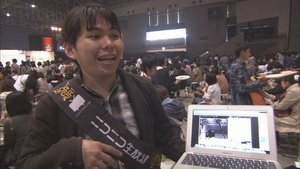
2. The Live-streamers: Interactive Webcasting
Got a PC or a smartphone? Media-sharing sites will let you stream live and interactively. It could be called "self-casting" and it's a whole world of its own. In a single day, via a single site, 100,000 people might be streaming in this way. What motivates people to participate in this form of social media? We go to an annual convention of these live-streamers near Tokyo, and then profile a number of "hosts" we encounter there. They're connecting via such sites with large and small circles of "friends" they might never actually see, let alone meet. It's a new kind of society.

3. The "Rain, then Fine" Coin Laundry
The Shonan coastal region in Japan conjures up images of summertime, youth culture, fashion. We cast an offbeat video eye on an obscure but revealing Shonan location: a 24-hour coin laundry, during the rainy season. People stream in, clutching bags of laundry, mostly just to dry them. While they're waiting, most just relax. Some talk. Businessmen exhausted from their daily routine. People who have lost a beloved partner and now live alone. All of them are waiting for a spell of "clear weather".

4. Climbing Mt. Fuji
When summer comes, people from all over Japan flock to Mt. Fuji. After the mountain was designated a World Heritage Site in 2013, the crowds swelled even more. The Yoshida Trailhead is one point where those going up and those coming down cross paths. Conversations with climbers reveal some of the troubles and joys in their lives. An office worker comes seeking a sense of achievement... A college student comes with prayers of finding work... A tapestry of human drama unfolds on the mountainside.

5. Home is Where the Locker Is; The Day Laborers of Osaka
The Airin District, Osaka. Here live thousands of male day laborers, many of whom spend their nights in rooms so small they have no storage space at all. So they rely greatly on cheap rental lockers to store their essential belongings and prized possessions. Each locker contains a condensed life: a narrative. We set up at a locker rental establishment, and ask the patrons to share parts of their life-stories with us during the Obon season, when most Japanese go on holiday to visit hometowns and family graves. For these men, home is in their lockers.
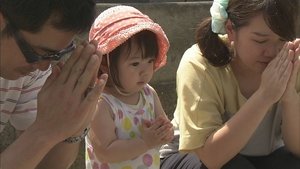
6. Yanaka Cemetery: Dialogs between Death and Life
The Yanaka Cemetery is one of Tokyo's oldest cemeteries. The greatest number of visitors come during the Obon holiday in the summer, when Japanese traditionally pay their respects to the dead. But though they come in droves, they each mourn in their own way. Some have finally been able to spare a few moments from their busy lives to tend to a grave. An elderly man is seen speaking to his absent spouse as he pours water ritually over her tombstone. A young man recounts memories of his deceased lover in front of her grave. This is a space for conversations between the departed and the bereaved.
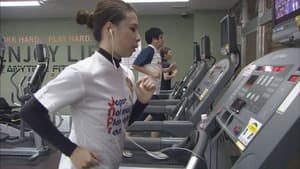
7. Personal Glimpses at a 24-Hour Gym
24-hour gyms are quickly gaining in popularity. Relatively inexpensive and open all hours, they're well-suited to busy modern life. A close look at patrons reveals many reasons why people want to tone their bodies. Some people must stay fit to keep their jobs; others need more strength to care for elderly parents; and some try to conquer something within themselves. This program examines the human motivations that bring patrons to the gym from early in the morning until late at night.

8. Printing Handheld Memories
With the ubiquity of digital cameras and smart phones, we live in an age of easy photographs. It's easy to print them out, too, using machines at a home electronics store. One patron prints daily photos of meals he's made; another prints a picture of his deceased father; and a long-distance couple exchange photos of each other to mark their love. This is the story of people who treasure time they've spent with special people and capture irreplaceable memories in the form of printed photographs.
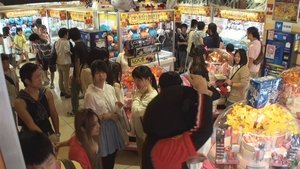
9. The Game Center, and the Prize beyond the Prize
Outside Yokohama's main rail station is a 6-floor game center. New games come out all the time, but an old standby is a cash cow: crane games, accounting for 40% of revenue. From early morning till late at night, an endless stream of people pay to wage a fierce struggle with these cranes in an effort to win a prize. Overworked office workers, job-hunting college kids, independent students re-taking college entrance exams. What prizes do they seek beyond the prizes right in front of them?

10. The Makeup Room
Osaka Station: a major transportation hub for Western Japan. One popular service catering to travelers there is a Ladies Powder Room. Women who have traveled long distances without any makeup on, or others on their way to or from work or hanging out, stop by here to freshen up. Makeup can be thought of as superficial, but these women's ultimate concerns-work, love, their futures-are hardly trivial. So what are their present circumstances, and what is on their minds?

11. The Voyage of Life on a Giant Ferry
For people with time, car ferries are an inexpensive mode of travel in Japan, which is surrounded by water. Each year, about 200,000 passengers ride one ferry line that connects Nagoya, Sendai and Hokkaido. All kinds of people board the ship, such as laborers going to booming Nagoya to find work; college students taking economical and easy graduation trips; and temp employees seeking relaxation. What will we learn about present-day Japan through the people we meet onboard over a 3-day period?
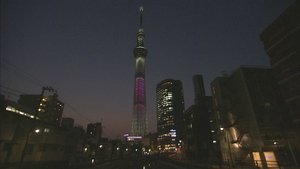
12. One Tower, Many Lives
The Tokyo SKYTREE opened in 2012 as Japan's tallest structure. Each day 100,000 people flock here to try to take photos of the giant radio tower. They come from all walks of life, including a poor student hoping to save enough to go up to the observation deck someday, and an Indonesian couple marking their golden wedding anniversary. At night, the tower is also a favorite destination for young people. This program documents 3 days at the foot of the SKYTREE, Tokyo's new tourist attraction.
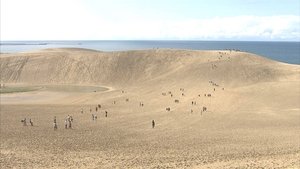
13. The Call of the Dunes
Nothing but sand, as far as the eye can see. The Tottori Sand Dunes on the Sea of Japan are a vast world of nothingness. 2 million visitors a year are drawn by scenery that is utterly different from their daily surroundings. But their motives differ. There are elderly people who feel the pull of eternity. Businesspeople who crave even a momentary liberation from the daily grind of numbers and memos in their cramped offices. Travelers from afar who hope to find themselves in the shadows of a night on the dunes. In this otherworldly milieu, we catch glimpses of people's "internal landscapes".

14. A 24/7 Discount Store
A giant discount store in Shinjuku, Tokyo, has 40,000 items for sale. It pulls in customers around the clock. This episode shoots during the 3 days just prior to a near-doubling of Japan's consumption tax, so the store is inundated with "rush-demand" shoppers. People loading up with daily necessities. Others losing perspective and buying items they don't really need. The guy who rushes in on the final night, and... We are prompted to consider the meaning of "shopping" and of "consumption".
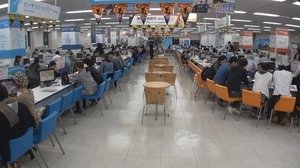
15. A Giant Travel Agency: Destinations and Detours
It occupies an entire floor of a large building in Shinjuku, a bustling district in Tokyo. An enormous travel agency, visited daily by a high volume of customers seeking discount airfares. In spite of the growth of Internet sales, people throng the 100 meters of counters here for the expert help they can get in making their dream voyages come true. For 72 hours we observe a range of customers, from meticulous long-range planners to those who, for whatever reason, simply must depart "tomorrow".
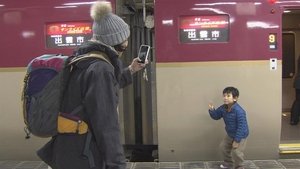
16. Night Train to Izumo: Destination - Destiny
An unusually large number of passengers gather at a train station in Tokyo. They're taking a special night train to Izumo, a thousand kilometers to the southwest, on the Japan Sea coast. It's November, when, according to Shinto belief, the gods are in residence at the Izumo shrines, above all the Izumo Taisha, or Grand Shrine. Men and women of marriageable age, and others seeking better matchups in their professional lives, make this pilgrimage and say their prayers. We listen and learn.
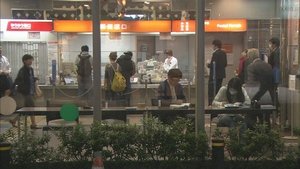
17. The Post Office that Never Sleeps
More and more these days, people communicate via texting, social media and email. Yet there are some who rush into the Shinjuku Post Office, a giant establishment in Tokyo open 24/7, at all hours of the day or night, with something that simply must be sent by post. Some want to send a special present to a special someone far away; others need a postmark to fix eligibility for an application process; others still are rushing to meet a deadline for submitting a résumé. We camp out by the counters to learn not only the "what", but the "why".

18. Youth "HelloWork" - A Job Agency
Over 80% of Japanese college grads landed jobs last spring, the main hiring season. However, in Shibuya, an area of Tokyo known for its youth culture, more than 200 young jobseekers a day paid a call on Youth "HelloWork", a special division of the government's job-matching program. Some say they want satisfying regular employment, not temporary work. Some, entering their 30's, hope the favorable economic climate can help them transition into a different job. But 30% of newly employed college grads quit within 3 years. What, then, do young people want? We listen in and find out.

19. An All-night Eatery
Uguisudani is one of the least-frequented stops on Tokyo's Yamanote mass-transit loop line. But it's well known for its nightlife. The transition is a stark one, from sparsely traveled daytime sidewalks to a garish neon nighttime of "love hotels" and other establishments of the adult services industry. This episode focuses on an all-night eatery that for 3 decades has provided a welcome sanctuary for the weary, the hungry, the thirsty and the lovelorn. An intermission from the dramas of their lives.

20. A Giant Bookstore: Wandering in a World of Words
Crammed together are magazines and novels, art books and technical treatises. In an era of increasing Internet book sales, streams of people are drawn to actual bookstores, in search of unexpected encounters. The bestsellers on display provide a glimpse of contemporary Japan. Books teaching "self-improvement" attract crowds of office workers on their way home; other shoppers, worn out by the daily grind, find themselves in the "spirituality" book section. All are wanderers in a forest of print.
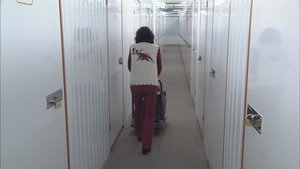
21. Self Storage: Secrets and Memories
Recently, all across Japan, there has been a sharp rise in the number of people turning to self-service storage to keep things they have no room for at home, or to keep "treasures" away from other family members. This episode interviews clients of a huge self-storage facility in Osaka, over the course of 3 days. The facility contains over a thousand units, large and small. In these rentable units, accessible 24/7, clients keep everything from treasured family mementos to secret collections. Getting people to display such private possessions on camera was far from easy, but what they showed us was...
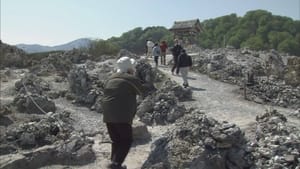
22. Mt. Osore: Between Life and Death
When people die, they go "to the mountain". So holds the folklore in the Tohoku (northeastern) region of Japan, referring to Mt.Osore, in Aomori Prefecture. During the national holidays in May, pilgrims travel to this holy place from all over the country. Some, like a couple who lost a child, go there ritually. Others try to communicate with deceased loved ones via a necromancer. Still others are tourists, there to collect a certificate. The bleak landscape matches the emotional desolation of many of the visitors. We spend 3 days with folks on the borderline between life and death.

23. Wrestlers on the Road
As the recession continues to hit Hokkaido, Japan, a small pro wrestling group fights an uphill battle to energize the prefecture. The group was started about 10 years ago by a pro wrestling-loving salesman who became saddened at the plight of his home prefecture. Since then, the wrestlers have toured Hokkaido to conduct morale-boosting events, even as they have struggled to make a profit. It is now December, and the group is preparing for its 3-day winter event. They will tour Yubari where the local government has gone bankrupt and 2 other cities. This program captures the wrestling group as it travels from town to town, raising the spirits of a local population that actively supports each other so that they can all get by.

24. The 24-Hour Supermarket: Just Another Day
Akune city is located in rural Kagoshima Prefecture. More than 40% of its population is over 65 years old. Its famous 24/7 supermarket is stocked with 390,000 items, from groceries, cars, tombstones to hoof trimming tools. 80% of the locals visit the supermarket each day including the elderly who come to socialize and young people who hang out there at night, lamenting the lack of job opportunities. While big cities thrive, people living in the countryside get a lot from simple pleasures.

25. At a Gas Station in a Downpour
It's a June weekend, and the rainy season in Japan's central Kanto region is being inaugurated with an apparently endless deluge. But in spite of the drenching, people must travel. Where are they all going in the pelting rain? At a 24-hour gas station, we meet a soaked construction worker obliged to cease work because of the rain, a traveler going to meet a child living elsewhere, a man working a night job to support his family...As they pause at the gas station to fill their tanks, they tell us their stories. Then, hoping for the rain to cease, they resume their journeys.
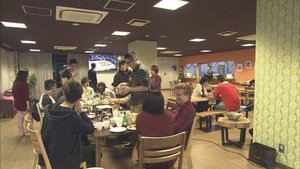
26. A 260-person "Sharehouse"
In 2013, one of Japan's largest "sharehouse" or shared-living apartment houses, opened in Tokyo. It can accommodate 260 people. Open to men, women and couples, it instantly reached full occupancy. There are aspiring artists, foreigners on short-term stays for work or study...people with all sorts of ambitions. In the evenings, in the common spaces, strangers lend each other a sympathetic ear. Parallel lives, intersecting lives: we encounter a variety in the course of 3 days spent getting to know the denizens of this remarkable establishment.

27. A 24/7 Animal Hospital: When a Pet Needs a Vet
In Shibuya, Tokyo, there's an animal hospital taking emergency cases 24/7. It was founded 46 years ago. Doting pet owners from all over Tokyo take their beloved charges here when sudden need arises: the dog mauled by a feral cat; the hamster with a broken leg; the cat injured in a traffic accident; some 100 cases daily. We meet a couple caring for a dog with dementia, an elderly woman whose cat has lived with her for 23 years.... Pets and owners can forge bonds that transcend even family ties.

28. At a Train Station in Fukushima
Within 20km of the Fukushima Daiichi Nuclear Power Plant - site of the 2011 nuclear disaster - is the town of Naraha. The train line that passes through the town was closed after the disaster, but was reopened in June. Although residents are not legally allowed to stay in Naraha, a variety of people come and go from the town's Tatsuta Station. The program captures these visitors - who include residents making short visits, staff at the nearby Fukushima Daini Nuclear Power Plant, and travelers coming for their own reasons - over 3 days.
